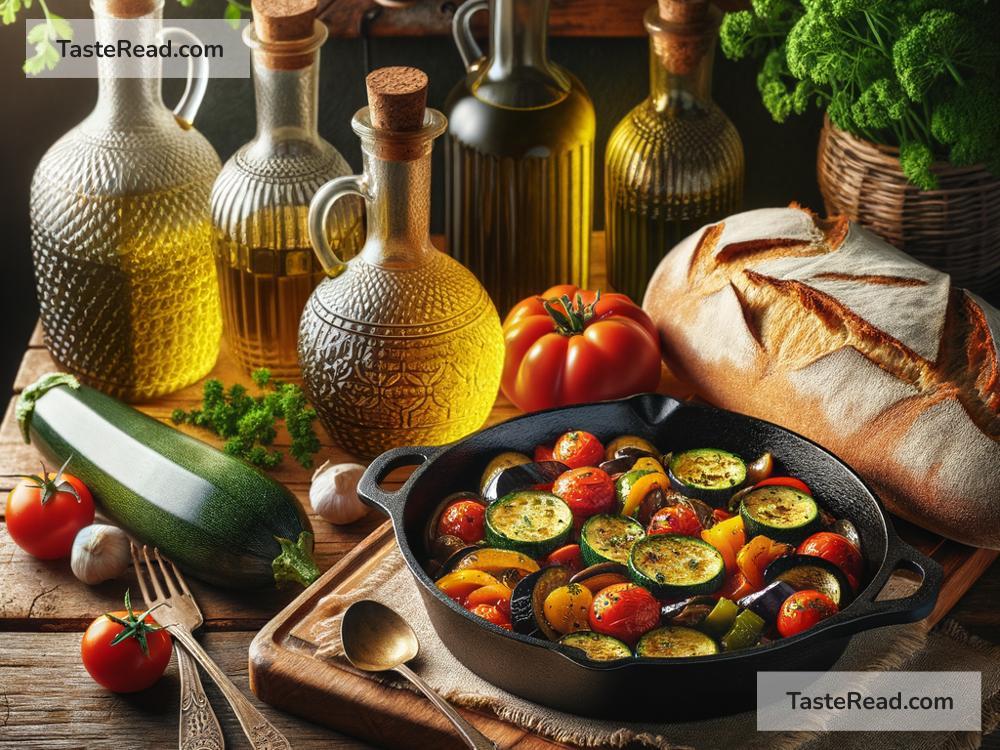The Evolution of French Ratatouille: A Journey Through Time
Ratatouille is more than just a dish—it’s a symbol of French culture, tradition, and creativity. Made from simple ingredients like vegetables, herbs, and olive oil, this Mediterranean stew has evolved over time, gaining fame across the world. Let’s dive into the history of ratatouille and see how it grew from humble beginnings to become one of France’s iconic dishes.
What Is Ratatouille?
Ratatouille is a hearty vegetable stew made from tomatoes, zucchini, eggplant, bell peppers, garlic, onions, olive oil, and herbs like thyme or basil. It’s colorful, flavorful, and versatile. You can serve it as a side dish, eat it on its own, or pair it with bread, rice, or pasta.
The dish comes from Provence, a region in southern France known for its sunny weather and Mediterranean flavors. Ratatouille captures the essence of Provençal cooking—using fresh, seasonal ingredients that are easy to grow or find in local markets.
The Origins of Ratatouille
To understand ratatouille’s journey, we have to go back several centuries. The word “ratatouille” itself comes from the French verb touiller, which means “to toss or stir.” It was originally used to describe simple rustic stews made from available ingredients.
Provence, with its mild climate and fertile soil, has long been home to vegetable-based dishes. Farmers grew tomatoes, zucchini, and eggplants in abundance, and olive oil production flourished in the region. These ingredients formed the foundation of ratatouille.
However, in its early days, ratatouille wasn’t the elegant layered dish we see in restaurants today. It was more like a rough-and-ready vegetable stew cooked by peasants. The recipe varied depending on what ingredients were available—they would simply chop vegetables, toss them in a pot, and let them simmer together.
An Evolution in the 18th and 19th Centuries
By the 18th century, ratatouille started to take shape as a more consistent dish. Thanks to trade routes and colonial explorations, Europe gained access to new vegetables and spices. Tomatoes, which originally came from the Americas, became essential to ratatouille recipes, adding moisture and tanginess to the stew.
French chefs and culinary enthusiasts began refining peasant fare, turning basic dishes like ratatouille into something even more delicious. Techniques like slow cooking allowed flavors to blend better, and herbs from Provence—such as thyme, rosemary, and bay leaves—added depth to the dish.
As France moved into the 19th century, ratatouille became a staple of Provençal cuisine. It was healthy, inexpensive, and packed with flavor. Eventually, the dish gained recognition outside of Provence and spread to other parts of France.
Modern Ratatouille: A Work of Art
Ratatouille took on a new life in the 20th century. French cuisine became world-renowned after chefs like Auguste Escoffier promoted the idea of structure and presentation in cooking. Ratatouille, too, was transformed into a dish that could be plated beautifully.
One style of modern ratatouille is the traditional stew, where the vegetables are sautéed together until tender and juicy. Another, more recent style involves carefully slicing the vegetables and layering them one by one in a circular pattern, creating a visually stunning dish. This version became especially popular after the release of Pixar’s 2007 animated movie Ratatouille.
The movie gave ratatouille a moment of global fame. In the film, the chef prepares a beautifully plated “layered” ratatouille that amazes food critics. As a result, people worldwide developed a newfound appreciation for this humble dish.
Ratatouille Today
Today, ratatouille is celebrated as one of France’s most iconic dishes, but it has also become a global phenomenon. Chefs across the world play with its flavors and presentation style, adding their own twists while honoring its roots. Some modern versions include cheese, meats like sausage, or even non-traditional spices.
Ratatouille remains a dish of simplicity and versatility. It’s perfect for vegetarians, but it can be adapted to suit meat-lovers too. The dish is entirely customizable—you can make it for large gatherings or as a quick weeknight dinner.
It’s also popular for its health benefits. Packed with vegetables, olive oil, and herbs, ratatouille is rich in vitamins, minerals, and antioxidants. It’s a delicious way to eat healthy while still enjoying bold, vibrant flavors.
The Cultural Importance of Ratatouille
Ratatouille isn’t just food—it represents community, creativity, and heritage. Its origins as a dish for peasants remind us that amazing flavors can emerge from simple ingredients. Over time, it evolved into something versatile and elegant, proving that tradition and innovation can coexist beautifully.
Food connects people, and ratatouille tells a story. Whether you enjoy it at a French bistro or make it at home, you’re participating in a culinary tradition that has lasted for centuries. It’s a reminder that the best meals don’t have to be complicated—they simply need care, love, and fresh ingredients.
Conclusion
The evolution of French ratatouille is remarkable. From being a rustic stew cooked by farmers to becoming a beloved dish served worldwide, it has stood the test of time. Ratatouille’s beauty lies in its simplicity, versatility, and cultural significance.
So, why not try making ratatouille yourself? Whether you prepare it the traditional way or experiment with creative presentation, you’ll be continuing the legacy of this timeless French dish—and enjoying a taste of Provence in every bite!


